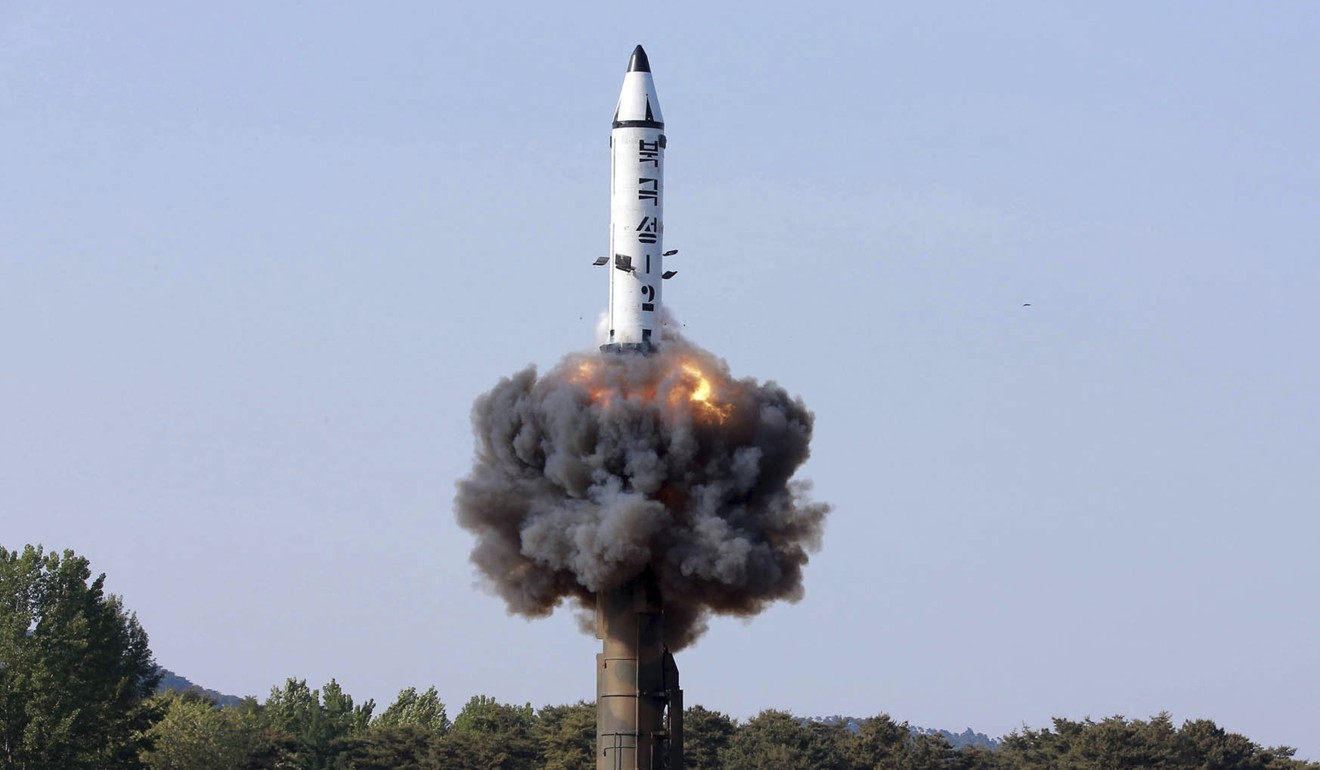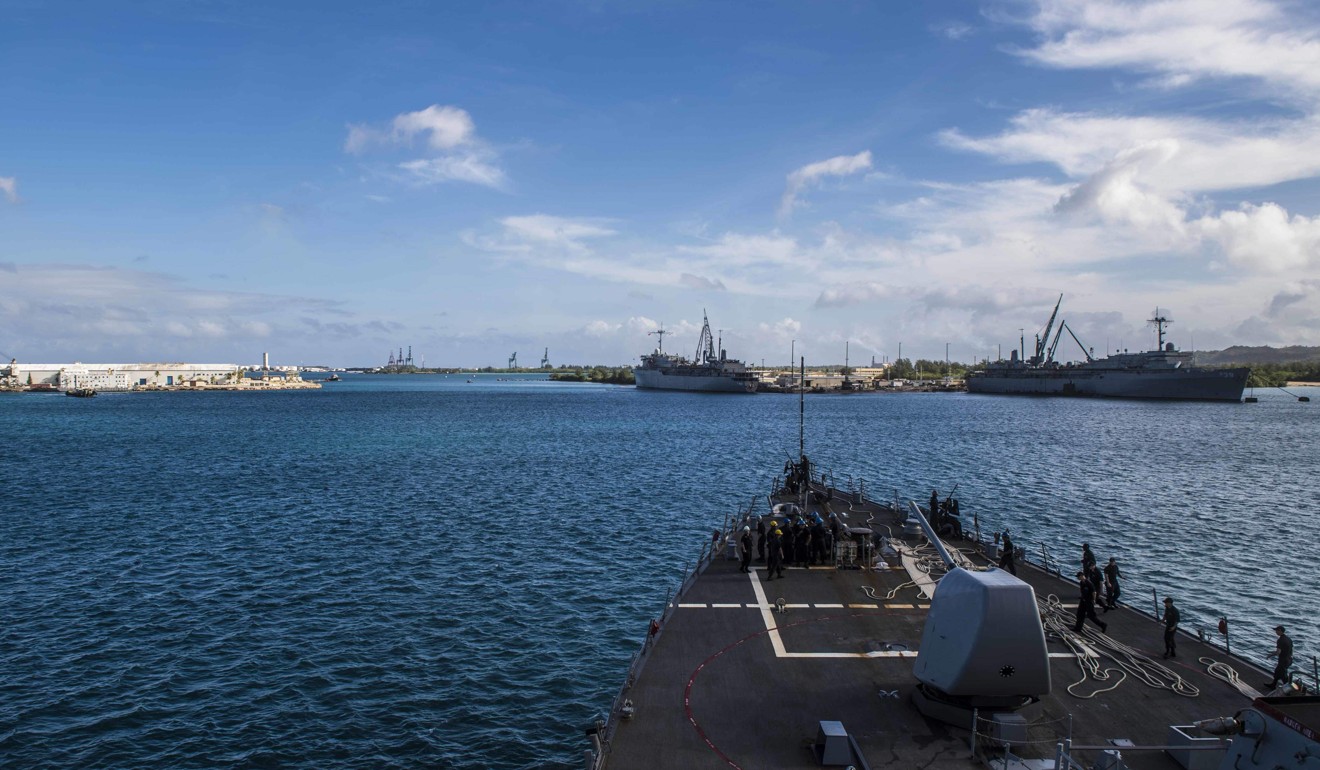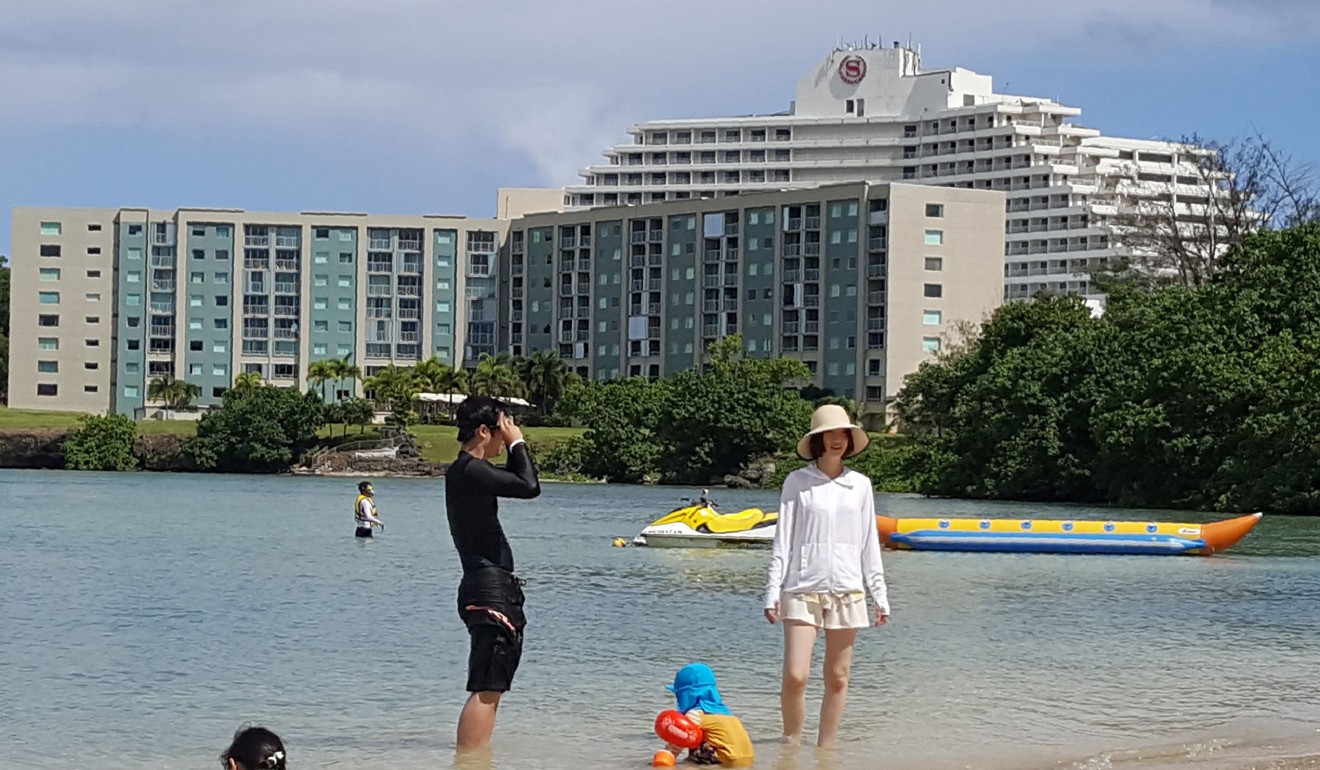
Analysis | ‘Disconcerting, but not unusual’: Guam is used to being centre of attention when it comes to North Korea
Guam is home to about 160,000 people and a US military base that includes a submarine squadron, an air base and a Coast Guard group
North Korea said it was working on a plan to fire simultaneously four ballistic missiles in an enveloping fire around Guam, a key US military stronghold as it slammed US President Donald Trump for being “bereft of reason”.
“Sound dialogue is not possible with such a guy bereft of reason and only absolute force can work on him,” the official KCNA news service quoted General Kim Rak-gyom of the Korean People’s Army (KPA) as saying on Thursday.
The unusually detailed statement from KCNA said the four missiles would overfly the Japanese prefectures of Shimane, Hiroshima and Koichi.
Defence Minister Itsunori Onodera said Japan could legally intercept a missile headed towards Guam it was judged to be an existential threat to Japan.
If the missiles got past Japanese defences, they would have a flight time of 17 minutes 45 seconds, travel 3,356.7 kilometres and hit the waters 30 to 40 kilometres away from Guam, KCNA reported.
That Kim is eyeing Guam, the sovereign US territory with a strategic airfield and naval station, is no surprise to the 160,000 Guamanians on the island.
Watch: North Korea threatens Guam, mocks Trump
“Every time there is some sabre rattling in the part of the world, Guam is always part of the occasion,” said Robert Underwood, the president of the University of Guam and the island’s former delegate to the House of Representatives.
“When you’re from Guam and live on Guam, it’s disconcerting, but not unusual,” Underwood told The Washington Post.
The governor of Guam, Eddie Baza Calvo, posted an address early Wednesday morning on YouTube, telling island residents not to worry.

Noting that “Guam is American soil” and that “an attack or threat on Guam is an attack or threat on the United States,” Calvo said he had reached out to the White House, and that American officials have assured him that the island “will be defended.”
About 3,500 km southeast of North Korea, Guam is on the edge of US power in the Pacific. Its combined navy and air force installation, Joint Region Marianas, is the home port for nuclear submarines, a contingent of Special Operations Forces and the launching point of flights for strategic bombers conducting rotational flights over Japanese territories and in the Korean Peninsula.

Guam has been a strategic linchpin since Spain relinquished control to the US Navy following the Spanish-American War in 1898. Japanese forces sped to the island following the bombing of Pearl Harbour in 1941 and captured it, subjecting its people to violence that some historians estimate to have killed 10 per cent of its population.
The island just celebrated its 73rd Liberation Day, commemorating the start of the US-led effort to liberate Guam on July 10, 1944, Underwood said.
Now, the island paradise relies on tourism and military activity to buoy its economy, which is marked by high unemployment.

There have been recent efforts to grant Guam more control over its government, including support from the United Nations. Guamanians cannot vote for president in the US elections, but they do vote for party delegates in primaries and have a non-voting delegate to the US House of Representatives.
Robert Kelly, an expert on North Korea at Pusan National University in South Korea, said the North Koreans always respond to threats with the “most outlandish rhetoric,” but that Pyongyang also knows that attacking the United States would be suicidal.
“They’re not apocalyptic ideologues like Osama bin Laden, willing to risk everything on some suicide gamble,” Kelly said.
North Korea has warned of strikes against the United States before.

Last August, the country’s Foreign Ministry said that all US military bases in the Pacific would “face ruin in the face of all-out and substantial attack”.
This followed a 2013 warning that Kim had ordered his military to prepare plans to attack US bases in Guam, Hawaii, South Korea, and the continental United States.
Guam’s growing strategic importance is due to its sovereign status, Underwood said.
The United States must get clearance from ally nations like South Korea and Japan to build up its military hardware in the event of defence escalations, which can be a lengthy process. But Guam has been used to project power immediately, Underwood said.
The island is also home to a terminal high-altitude area defence missile defence battery, which targets ballistic missiles. The presence of THAAD systems in South Korea has drawn consternation from Pyongyang and Beijing, which view the defensive system as an escalating presence.
The numerous installations on Guam host about 6,000 troops, a number that’s growing as the United States seeks to rebalance its forces in the Pacific amid a growing reach of China’s military and North Korea’s increasingly sophisticated nuclear programme.
In 2014, then-Deputy Defence Secretary Bob Work said 60 per cent of the US Navy and 60 per cent of combat air forces would be located in the region.
“Guam has always been a central part of our plans - certainly a central part of the Navy’s plans but now a central part of the entire Department of Defence’s plans,” he said at the time.
That leaves an island of US citizens watching the news closely as posturing escalates on either side of the Pacific.
Madeleine Bordallo, the island’s congresswoman, said that “North Korea’s most recent threat to target Guam is dangerous and it further heightens tensions in our region.”
Underwood pointed out that “most of the time the overheated rhetoric comes from North Korea. This time it’s coming from the US side.”
Agence France-Presse, The Washington Post, Reuters
